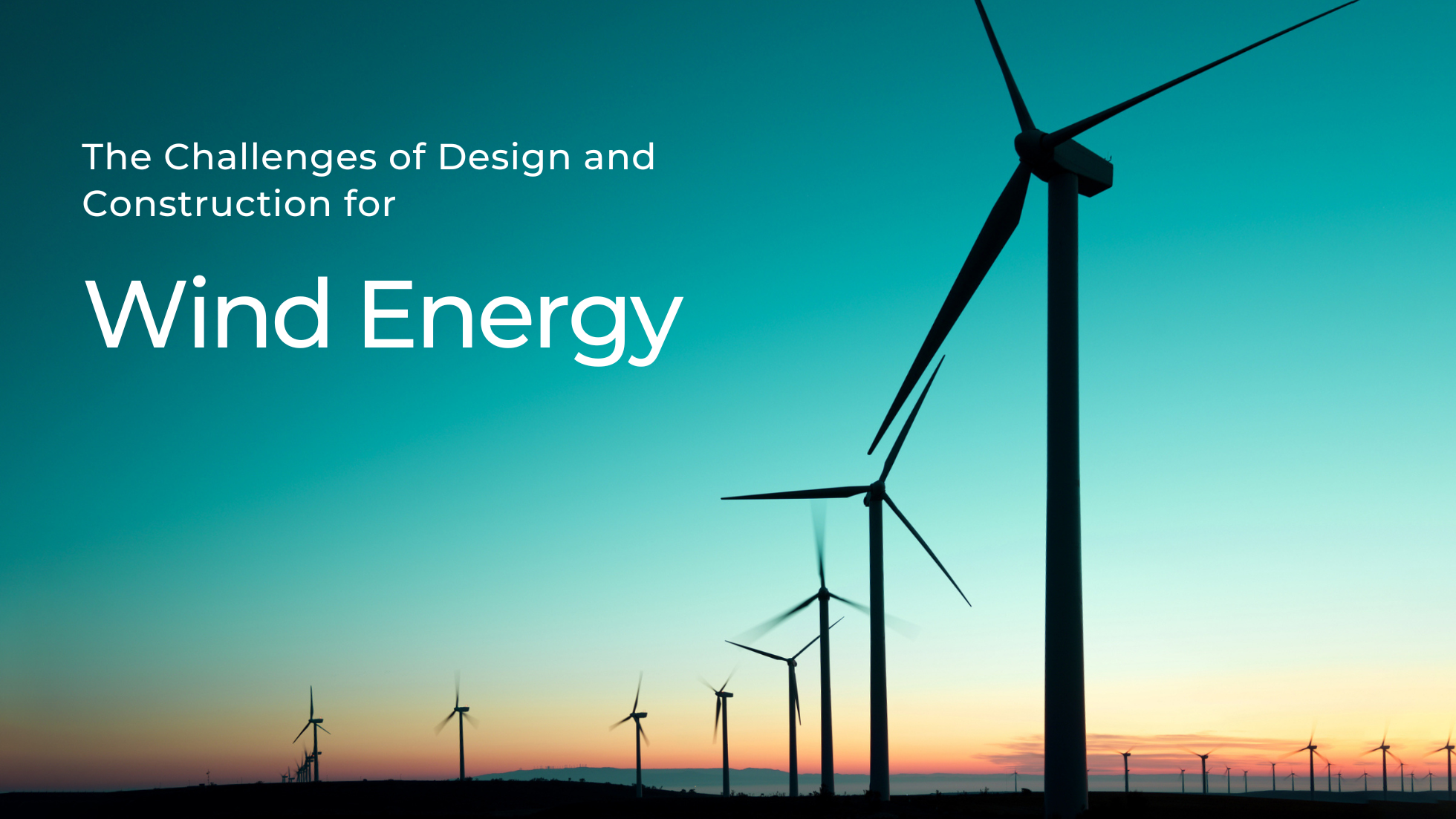Constructing Data Centers that Power Artificial Intelligence (AI) Learn More
The Challenges of Design and Construction for Wind Energy

The wind industry in the U.S. is gaining traction as the demands of alternative energy keep growing. In 2022, wind turbines operating in all 50 states generated more than 10% of the net total of the country’s energy, and investments in new wind projects added $20 billion to the U.S. economy—helping to avoid 336 million metric tons of carbon dioxide emissions annually. The country has set a goal of meeting 20 percent of its electricity needs with wind power by 2030.
This increase in demand is leading to significant advancements in infrastructure. Still, challenges remain in the large-scale implementation of wind turbines. First and foremost are the logistical factors involved with delivering and installing large wind turbine components. Then there’s the fact that the ideal wind sites are often in remote locations, and installation challenges must be overcome in order to bring electricity generated from wind farms to urban areas, where it is needed most. Upgrading the nation’s transmission network to connect areas with abundant wind resources to population centers has the potential to significantly reduce the costs of expanding land-based wind energy.
The specific challenges facing wind turbine implementation
- The massive size of turbine blades (which can reach hundreds of feet in length) presents certain manufacturing and transportation obstacles. Once fully constructed, blades can not be bent or folded. This limits the routes that vehicles can take to transport them, the radius of turns the vehicles can make, and maneuvering highway overpasses and bridges. The U.S. Department of Energy’s Big Adaptive Rotor project is exploring innovations like highly flexible blades that simultaneously boost wind energy capture while resolving transportation challenges of moving giant wind blades by rail.
- The height of wind turbine towers is another major consideration. In the northeastern, southeastern, and western U.S. wind conditions near the ground are often low or turbulent, which limits the amount of electricity that can be generated from wind energy. While today’s utility-scale wind turbines average 82 meter hub heights, taller wind turbines would be better able to take advantage of the stronger, more consistent winds available at greater heights. This would increase the number of locations that could cost-effectively produce renewable wind energy. The Energy Department’s report, Enabling Wind Power Nationwide, shows that the key to unlocking wind energy’s potential in all 50 states is to access the stronger and more consistent winds found at increased elevations. Continued technology advancements have the potential to unlock wind energy across an additional 700,000 square miles— about one-fifth of the country—and provide the opportunity for wind power to expand throughout the U.S. Unlocking this potential will require new manufacturing or installation techniques to address the transportation and logistics challenges associated with large towers.
BEI and wind infrastructure innovation
A leader in wind power system design and installation, BEI brings together a comprehensive range of services—engineering, electrical foundation, project management, and implementation capabilities—to deliver an end-to-end approach to meeting the demands of the wind energy industry. Through our extensive work in this area, we are actively involved in addressing the challenges outlined above, in collaboration with the partners we work with on various wind projects as well as through our affiliations with industry trade organizations.
Wind presents design and engineering challenges that are distinct from the other areas of renewable energy, and we are actively researching new and exciting ideas to address them.